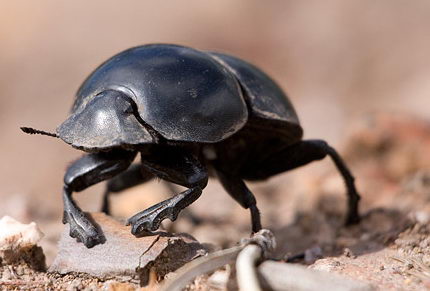Now make up your mind for the most fascinating dung beetle facts including dung beetles diet, habitat, and ecological behavior. Dung beetles are the medium to large-sized beetles that primarily feeds on ephemeral and distinct food resource, comprising piles of dung created by warm-blooded and herbivores animals.
The subfamily Scarabacinae consists of more than 5000 species. All the beetle species display a distinctive feeding and ecological behavior. Many dung beetles are particularly known for burying dungs in tunnels, generating a brood mass that offers food for the growth of a single larva.
Besides, they remove dung from the compaction and pat in tunnels in the grounds as provisioning for their offspring. The female beetle lays a single egg in each brood mass. They play significant role in cleaning out all out the earth’s surface and are ecologically imperative creatures.
According to the scientists, they have found up to 16,000 beetles in a single 1.5 kg heap of elephant dung. In the recent years, scientists have named beetles as the world’s strongest insects as they are capable to pull equivalent of six double decker buses.
Dung Beetle Facts
- A dung beetle is also called common dung beetle. It belongs to the family of Pachylomera femoralis. These beetles are gregarious while feeding.
- The male and female dung beetles reach a length of about 1.75 inches.
- The weight of the male and female beetles measure around 0.75 oz.
- The larval period ranges from 2 to 3 months.
- The pupil stage is up to one year only.
- The period of incubation lasts for one week.
- The average life span of dung beetle is 2 years.
- There are 750 recognized species of dung beetles and the common dung beetle inhabits all throughout Africa. It is also one of the larger members of its family.
- Dung beetle displays an unmistakable appearance of flat and dented wing case.
- They have perfectly developed hind and middle legs together with the five-jointed feet.
- Common dung beetles are often found flying around the bush.
- They have a keen sense of smell and are very agile in picking fresh herbivore dung.
- The common dung beetle often makes tennis-ball-sized dungs which are externally smooth. They tend to smooth it with their paddled-shaped front legs.
- The length of a dung beetle’s egg is about 3 mm.
- Many dung beetles have horns which they usually employ while fighting. This fighting is often observed among males. The dung beetles from the Phanaeini are more likely to interact above the ground and are diurnal.
- Common dung beetles are classified into three main groups: rollers, tunnelers, and dwellers.
- These animals fancy dung from herbivorous and omnivorous animals that solely rely on plants. While the adult dung beetle feeds on liquid, the beetle larvae primarily eats solid larvae.
- These beetles have wings and they certainly fly.
- With the help of their six legs they roll and dig holes very easily.
- They also help growing new trees.
- On the busy nights, they are often involved burying 250 times in their own weight in dung.
- Common dung beetles are solitary except for the period they spend with their partner before mating. Besides, the female beetles are best known mothers in the world of insects as they stick with their offspring for two months.

Image Courtesy of beloutte.deviantart.com
Feeding Ecology and Diet
Dung beetles predominantly eat herbivore dung in domestic livestock and wilderness areas. Some of these species also feeds on decaying material and mushrooms. They are known to bury almost 80% of a cattle’s dung in Texas.
Distribution and Habitat
Common dung beetles commonly live across sub-Saharan Africa, but are absent from regions that are dry and devoid of herbivores. They are not found in Antarctica and their habitats ranging from desert to rainforests. They live in farmland, grasslands, and forests and they do not generally live in extreme hot and cold climates.






Leave a Reply